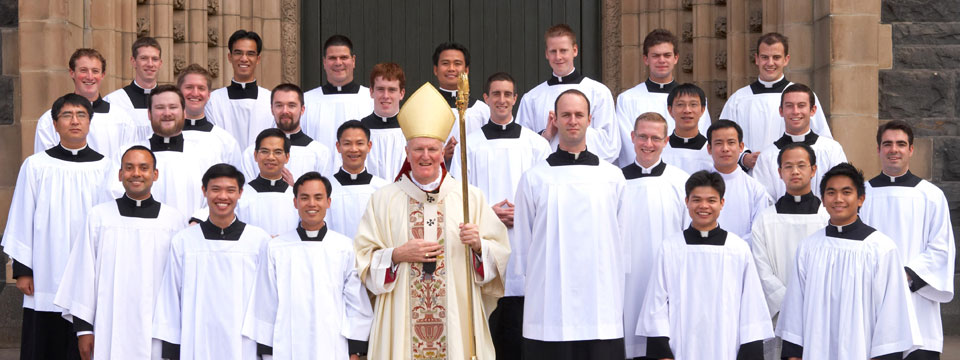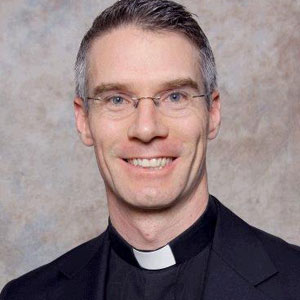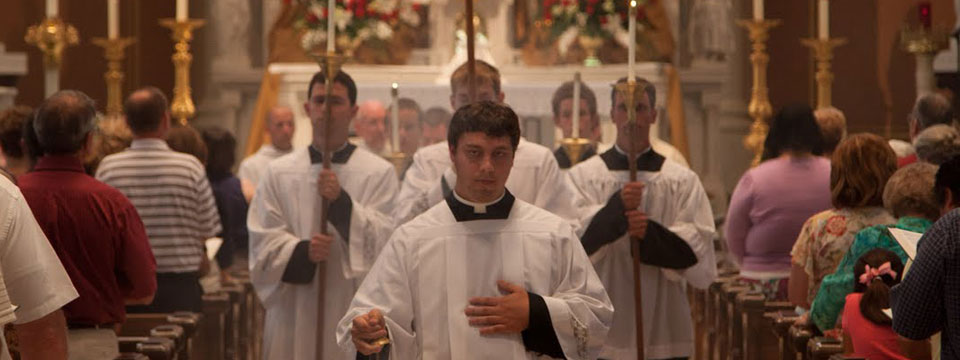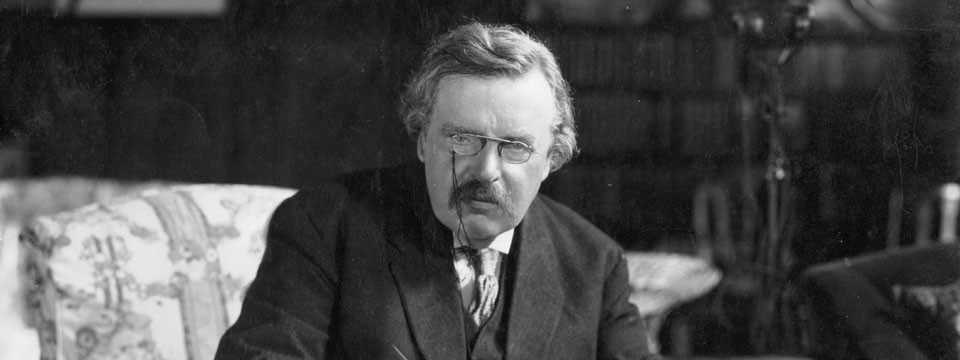Where are they “coming from”?
What attracts a young man?
In our quest for more vocations to the priesthood we firstly need to understand what the contemporary seminary candidate is looking for in his pursuit of the priesthood. This in turn can help us, as priests, to respond effectively and sympathetically to those men. If we know where they are coming from, it might also give us a hint as to where best to put our resources in trying to attract other men to join them; to join us! The second part of the question is therefore contingent on the first.
What attracts a young man to the priesthood is often what he nominates as having been influential in his decision to start thinking about a vocation to the priesthood. Therefore, one approach to this topic is to consider what we might call a typical profile of a contemporary seminary candidate. My observations relate to young men in Australia and the English-speaking world. They are generalisations based on my individual work with hundreds of young men over the past seven years as chaplain to Catholic Youth Ministry and Vocations Director for the Archdiocese of Melbourne. I’m not suggesting that they are typical of all young Catholics; just of the young Catholics who are exploring the possibility of the priesthood. And, of course, there are exceptions. However, I have observed amazingly similar profiles of seminarians in countries as diverse as Italy and Canada, Germany and South Africa.
They are young, yet already formed in self-identity. The young man is very often in his early twenties, either a university student or graduate. He comes from either a very devout Catholic family or from a family for whom the faith was not particularly important. The latter underwent some type of conversion, more and more so as a result of having attended a World Youth Day. (In the lead up to World Youth Day in Sydney I asked the seminarians at Corpus Christi College in Melbourne how many of them would attribute to WYD at least a part in their vocation. Over a third indicated that WYD either initiated the thought of or contributed to their decision to enquire into the priesthood.)
He will have been involved at some stage as an altar server or in a youth group where he came in contact with a priest who not only took an interest in him, but who formed him in the faith. He has a growing network of friends who are involved in the Church and take their faith seriously. He is likely to be interested in prayer, especially Eucharistic adoration and may attend Mass at a church other than his geographical parish. He is very evangelistic and wants to bring others to know Christ.
What begins to emerge is the image of young men who seem to be attracted by a strong ecclesial identity. As idealists they look for a degree of certainty that they don’t find elsewhere in society. (It remains to be seen if the current economic crisis will inspire some vocations.) The most important ingredient is personal conversion leading to self-awareness of the need for a deeper personal relationship with God as mediated by the Church. This helps to explain the respectfor the Pope which these young men hold. Some commentators assumed that with John Paul II’s passing the papacy would not loom so large on the popular horizon. Instead Pope Benedict has maintained a huge following among youth.
Young men who are attracted to the priesthood see it as encapsulating their highest ideal of discipleship. They actually want to be disciples of Jesus – they aspire to be saints. When this answer invariably arises in response to my interview question as to why this man wants to be a priest, I always counter by saying that you don’t have to be a priest to be a saint. Even though it is difficult to articulate, what the young man is trying to express, I think it is a desire to imitate Christ as closely as possible. The priesthood does this sacramentally.
In recent months I have been in contact with some resourceful youth from England and the United States of America who decided to share their own consideration of a priestly vocation with other like-minded young people. This is classic youth ministering to youth. The result is their very attractive website – www.catholicpriest.me.uk – which poses the question at the masthead, A vocation to be a priest? They are in their mid-teens and are aware that they are in the early stages of discernment. Nevertheless they are confident that they have heard a call from God. Reading their testimonies we will probably be very surprised at their precocity, but hopefully we will also be inspired by their knowledge and humility. I have heard it said before, and have come to see myself, that today’s seminarian (and future priest) is very different from his contemporaries of even only a generation ago.
Listening to them. It seems to me that the greatest disservice we can do to these young people is not to listen to them and meet them where they are. They are often enthusiastic and sometimes idealistic, but they come to the Church as a product of their culture and the peculiarities of this time in Church history. They desire to serve Christ and his Church, but they also want normalcy. They love sport and computer games, but they love God and his people too.
The most effective vocations ministry that we priests can do for young men attracted to or potentially interested in the priesthood is to be priests: to love our priesthood by our interior peace and by our outward disposition. What attracts men to the priesthood nowadays? The simple answer is: Jesus Christ. And if each of us goes back to the genesis of our vocation, I am confident that each of us will, if we look deep enough, in fact give the same answer: we were attracted by Jesus too; the one who is “the same yesterday, today and forever” (Heb 13: 8).





